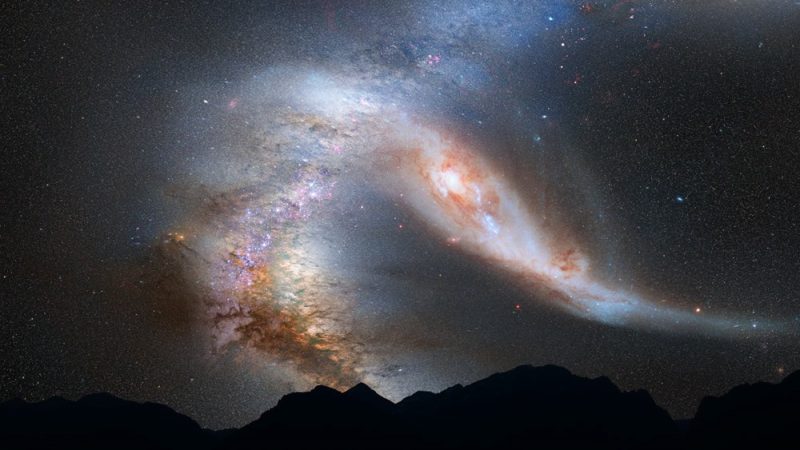Galactic mashup
Save the date: The Milky Way will merge with its nearest large neighbor in about 4 billion years

The Andromeda galaxy, our nearest large galactic neighbor, is headed straight for the Milky Way. That’s our home galaxy. The collision is inevitable. But don’t worry, you won’t be around to see it.
Gravity pulls Andromeda toward the Milky Way at a brisk 250,000 miles (roughly 400,000 kilometers) per hour. That’s fast enough to get from Earth to the moon in about an hour. But even at that speed, the galactic merger won’t occur for another 4 billion years.
The cosmic forecast was issued by astronomers who studied stars in Andromeda. They work at the Space Telescope Science Institute in Baltimore. By tracking changes in the stars’ locations between 2002 and 2010, they calculated how fast and in what direction Andromeda was moving. To view the stars, they used the Hubble Space Telescope. This school bus–sized telescope orbits Earth, observing distant stars and galaxies.
Though the two galaxies will collide, the stars inside will likely survive. Every galaxy contains so much empty space between stars that it’s unlikely two stars would smash together. And though the sun and all its orbiting planets, including Earth, will probably end up in a new position, they won’t be destroyed. Eventually the galactic centers, each of which likely contains a supermassive black hole, will combine into a single supermassive black hole.
Until the new study, astronomers didn’t know if the Milky Way’s collision with Andromeda would be a glancing blow or head-on. Based on their calculations, the scientists predict that the merger will take about 2 billion years to finish, once it’s begun. That means the whole process won’t be completed until about 6 billion years from now — probably long after the sun runs out of fuel and swells to become a bright, cool star known as a red giant.
Collisions aren’t that unusual. Small, neighboring galaxies may merge to form galactic giants. And giants, like the Milky Way and Andromeda, may also smash into each other. The Hubble Space Telescope has recorded stunning images of these collisions in progress. Hubble data also suggest that such collisions happened more often long ago, when the universe was smaller and the galaxies were closer together.
Astronomers still don’t know, however, how often mergers occur. They want to know because galactic collisions may be an important contributor to how our universe developed. These linkups may lead to star formation, for example.
POWER WORDS
Andromeda A large spiral galaxy located 2.5 million light-years away that is similar in size and shape to the Milky Way.
galaxy A system of millions or billions of stars, together with gas and dust, held together by gravitational attraction.
gravity The force that attracts any body with mass, or bulk, toward any other body with mass. The more mass there is, the more gravity there is.
light-year The distance light travels in a year, nearly 9.5 trillion kilometers.
Milky Way The galaxy in which Earth’s solar system resides.







